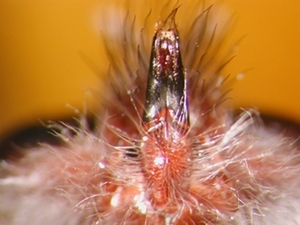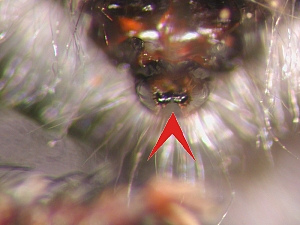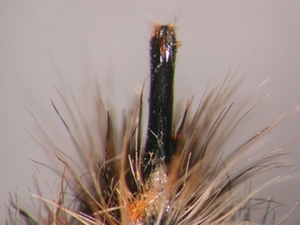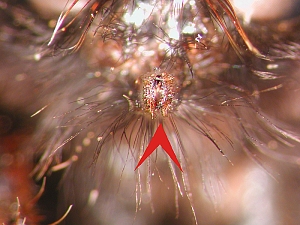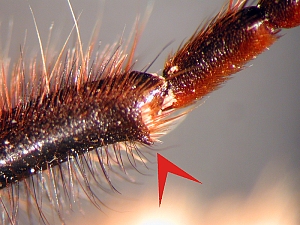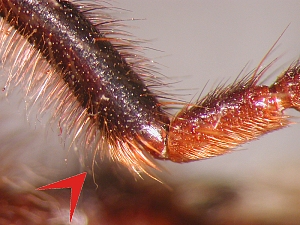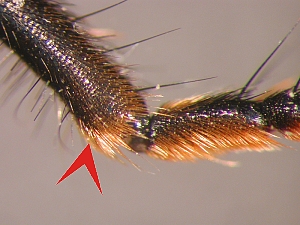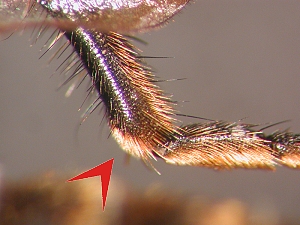g
Start g
- Robber flies of Germany -
[Key] Catalogue Comparisons Notes Terminology
key
- Subfamilies
- Laphriinae
Andrenosoma
Choerades
Laphria
contents & layout
& copyright:
Fritz Geller-Grimm
Imprint
There are presently 16 species known to occur in Germany. The genus Andrenosoma can be distinguished by the triangular-shaped (in cross-section) proboscis. Differentiating between Laphria and Choerades, however, is more difficult because several diagnostic characters are shared between the two genera. That is why a number of authors do not accept the genus Choerades and it was synonymised on a number of occasions.
Species of Choerades are distributed world-wide whereas Laphria is restricted to the Holarctic Region. It is, however, relatively easy to distinguish both genera in Germany because the three species of Laphria are much larger than those of Choerades.
| 1 a. |
Proboscis dorso-ventrally flattened, triangular in cross-section; tip pointed in lateral view [Fig. 1: ventral], [Fig. 2: frontal]
. . . . . . . . . . . .
|
| 1 b. |
Proboscis laterally compressed, blade-like in cross-section; tip rounded in lateral view [Fig. 3: ventral], [Fig. 4: frontal]
. . . . . . . . . . . .
|
| 2 a. |
Average size between 16 - 26 mm; males: hind tibia ventrally without dense pile of hairs apically, but with laterally pointing spur (protuberance on tibia) [Fig. 5: male]; females: hind tibia with dense pile of hairs apically and additionally long hairs [Fig. 6: female]
. . . . . . . . . . . .
|
| 2 b. |
Average size between 12 - 20 mm; males: hind tibia ventrally with dense pile of hairs apically, but without any spur or protuberance [Fig. 7: male]; females: hind tibia with dense pile of hairs apically and only few long hairs [Fig. 8: female]
. . . . . . . . . . . .
|
